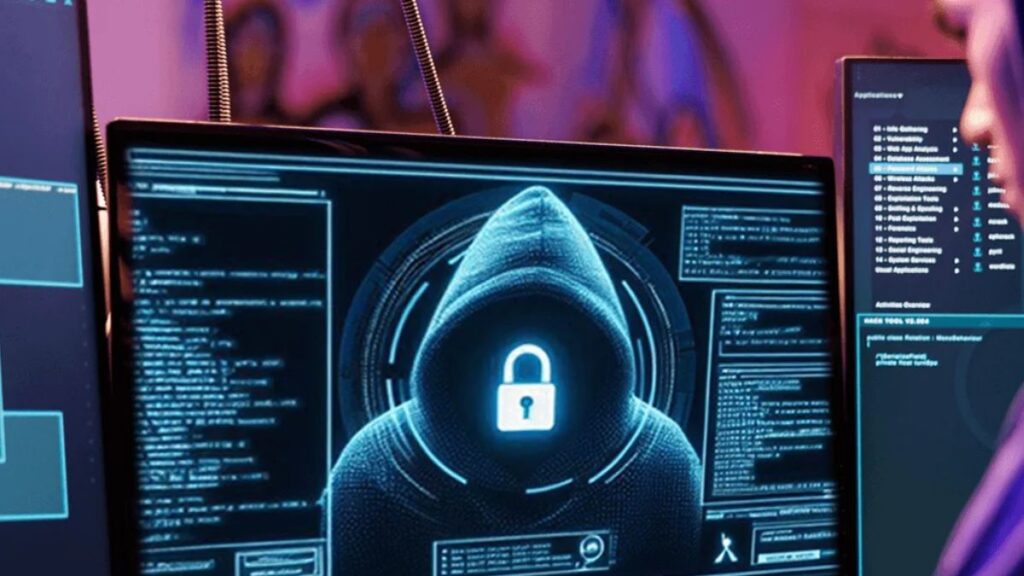Ransomware attacks have emerged as one of the most alarming cyber threats facing individuals and organizations worldwide. These malicious programs lock users out of their systems or encrypt critical files, demanding a ransom payment for their release. In recent years, the frequency and severity of these attacks have skyrocketed, affecting millions of people and businesses. From small personal devices to large corporations, no one is immune. In this article, we will explore the growing threat of ransomware, the devastating impact it can have, and—most importantly—how to stay safe from this increasingly sophisticated cybercrime.
Understanding Ransomware: The Basics
Ransomware is a type of malicious software, or malware, designed to hold a user’s data hostage by encrypting files or locking access to a computer system. Once the files are locked or encrypted, the attacker demands a ransom, typically in cryptocurrency, in exchange for restoring access. These ransom demands can range from a few hundred dollars to millions, depending on the size of the target and the criticality of the data involved.
While ransomware attacks have been around for years, their evolution into highly sophisticated and targeted forms has escalated. Initially, they were launched indiscriminately, often spreading through spam emails or compromised websites. However, modern ransomware campaigns are increasingly targeted, often using specific vulnerabilities in a company’s network or exploiting weak spots in their cybersecurity defenses.
The growing trend in ransomware is known as “double extortion.” In this model, attackers not only encrypt the victim’s data but also threaten to release or leak sensitive information if the ransom is not paid. This makes the stakes even higher for organizations, as it involves potential public embarrassment, regulatory fines, and the loss of customer trust.
The Impact of Ransomware Attacks
The impact of a ransomware attack is far-reaching, affecting businesses, governments, healthcare providers, and even individual users. Here are some of the most significant consequences of a successful ransomware attack:
Financial Loss
The immediate financial loss can be staggering. Ransom demands can range from hundreds to millions of dollars. For businesses, these payments can disrupt cash flow, damage profitability, and even lead to bankruptcy if the attack is severe enough. Paying the ransom also does not guarantee that the attackers will honor their promise and decrypt the files, leaving businesses with little choice but to deal with the aftermath.
Reputational Damage
A ransomware attack can have long-lasting reputational effects. If the data of customers or clients is compromised, the trust they have in the organization can be irrevocably damaged. In industries like healthcare, finance, or government, the consequences are particularly severe. Rebuilding trust and regaining customer confidence after a cyberattack can take years, and in some cases, businesses may never recover fully.
Operational Disruption
For businesses, especially large enterprises, a ransomware attack can halt operations entirely. The encrypted files or locked systems may contain essential data such as financial records, client information, or internal communications. Even with backup systems in place, recovery can take days, weeks, or even months, depending on the size of the attack. During this time, productivity plummets, and critical business functions grind to a halt.
Legal and Regulatory Consequences
Data breaches resulting from ransomware attacks can lead to severe legal and regulatory consequences. Depending on the jurisdiction and the type of data involved, businesses could face lawsuits, fines, and penalties for failing to protect sensitive information. For example, organizations that handle personal health information (PHI) or financial data may face strict regulations like HIPAA or GDPR. Non-compliance can result in hefty fines, further deepening the financial and reputational impact of an attack.
Why Ransomware is a Growing Threat
Several factors contribute to the increasing prevalence of ransomware. The anonymity of the internet, particularly cryptocurrency transactions, makes it easier for cybercriminals to operate without fear of being caught. Additionally, the rise in remote work has created new opportunities for hackers to exploit weak security practices or vulnerabilities in home office setups.
Evolution of Ransomware Tactics
Cybercriminals are constantly evolving their methods to evade detection and increase the effectiveness of their attacks. In addition to traditional phishing emails, attackers now use more advanced techniques such as exploiting vulnerabilities in widely used software or applications. In some cases, they even deploy ransomware through malicious updates or software that appears legitimate.
A growing trend is the use of “ransomware-as-a-service,” which allows less technically skilled criminals to buy and deploy ransomware. This has lowered the barrier to entry, making ransomware attacks more widespread and harder to trace back to the original perpetrators.
Increased Targeting of Critical Infrastructure
Another concerning trend is the growing focus on critical infrastructure, including healthcare systems, energy grids, and government agencies. These sectors are often underfunded in terms of cybersecurity, making them prime targets for ransomware attacks. The disruption of critical infrastructure can have life-or-death consequences, as evidenced by several high-profile attacks on hospitals and public services during the COVID-19 pandemic.
How to Stay Safe from Ransomware
While the threat of ransomware is real and growing, there are several steps you can take to protect yourself and your organization. Staying safe requires a combination of awareness, proactive security measures, and rapid response planning.
1. Keep Software Up-to-Date
One of the simplest yet most effective ways to prevent ransomware attacks is by keeping your software, operating systems, and applications up to date. Many ransomware attacks exploit known vulnerabilities in outdated software. Regularly updating your system ensures that you have the latest security patches, making it harder for cybercriminals to gain access.
2. Use Antivirus and Anti-Malware Software
Installing reliable antivirus and anti-malware software on your devices is crucial for detecting and blocking ransomware. These programs can identify malicious files before they have a chance to infect your system. Ensure that your antivirus software is set to automatically update, as new threats emerge regularly.
3. Implement Strong Passwords and Multi-Factor Authentication (MFA)
Weak passwords are a major vulnerability in cybersecurity. Use strong, unique passwords for every account and service, and avoid using default passwords for devices and routers. Multi-factor authentication (MFA) adds an additional layer of protection by requiring a second form of verification (such as a text message or app notification) in addition to your password.
4. Backup Your Data Regularly
One of the most effective defenses against ransomware is maintaining up-to-date backups of your critical files and data. Use cloud-based services or external drives to back up your data regularly. In the event of an attack, you can restore your files without paying the ransom. Ensure that your backup systems are not connected to your main network to prevent them from being encrypted during an attack.
5. Be Wary of Phishing Emails and Suspicious Links
Phishing emails remain one of the most common methods for distributing ransomware. These emails may appear legitimate but contain malicious attachments or links. Be cautious when opening emails from unknown senders, and avoid clicking on any suspicious links or downloading attachments. Training employees to recognize phishing attempts is also critical for organizations.
6. Segment Your Network
In large organizations, network segmentation is an effective way to limit the spread of ransomware. By dividing your network into separate segments, you can prevent an attacker from gaining access to your entire system if they manage to infiltrate one part of the network. Implement access controls to ensure that only authorized users can access sensitive data and systems.
7. Prepare a Ransomware Response Plan
In the event of a ransomware attack, having a well-defined response plan is essential. This should include procedures for isolating infected systems, notifying stakeholders, and contacting law enforcement or cybersecurity experts. A response plan can help minimize the damage caused by an attack and speed up recovery.
8. Educate and Train Employees
Human error is often the weakest link in cybersecurity. Regularly educate and train employees on the latest ransomware threats, phishing tactics, and best practices for maintaining cybersecurity. Implementing a culture of security awareness can significantly reduce the risk of a successful attack.
Conclusion
The growing threat of ransomware is a reality that individuals and organizations must take seriously. By understanding the risks and taking proactive measures, you can significantly reduce your chances of falling victim to these malicious attacks. From maintaining up-to-date software and using antivirus protection to educating employees and creating a robust response plan, there are several steps you can take to stay safe. As ransomware continues to evolve, staying vigilant and prepared is your best defense against this increasingly prevalent cyber threat.



